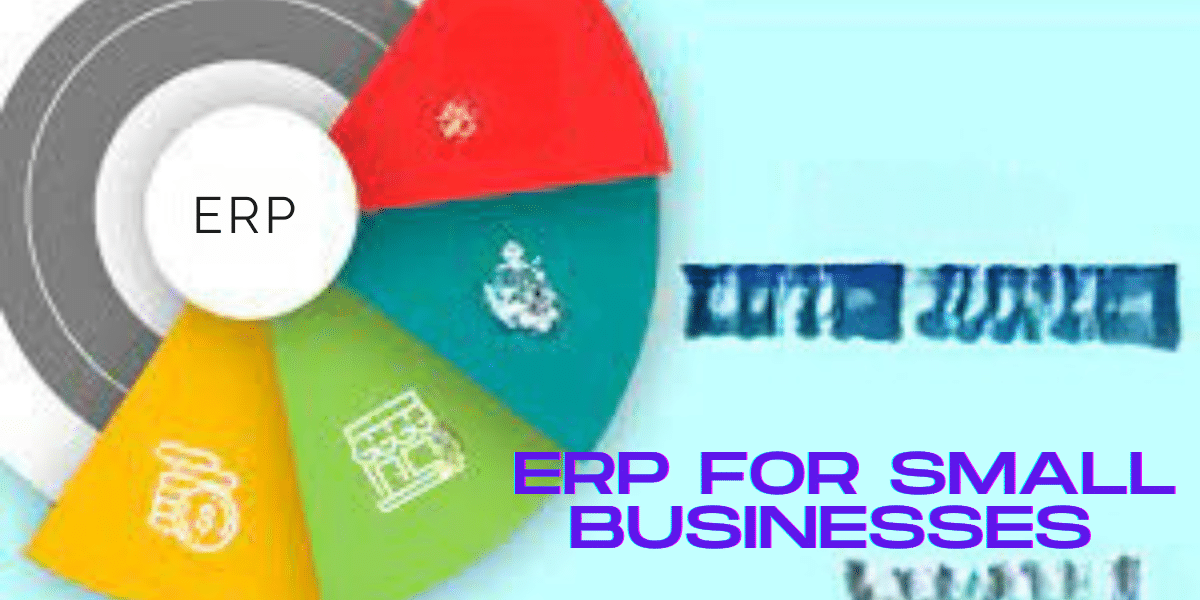Enterprise Resource Planning (ERP) systems are software solutions that integrate various business processes and functions across an organization into a unified platform. While traditional ERP systems have often been associated with large enterprises, there are also ERP solutions tailored for small businesses. These systems are designed to meet the specific needs and budget constraints of smaller organizations. Here are some considerations and examples of ERP systems suitable for small businesses :
Considerations for ERP for Small Businesses:
Scalability :
Scalability in the context of ERP systems refers to the ability of the software to accommodate growth and increased demands as a business expands. It involves the system’s capacity to handle a growing volume of data, users, and transactions without significant performance degradation or the need for a complete overhaul. Scalability is a crucial consideration for small businesses, as their needs and operations may evolve over time. Here are some key aspects of scalability in ERP systems:
- User Scalability:
- A scalable ERP system should be able to handle an increasing number of users efficiently. As your business grows, more employees may need access to the ERP system, and the software should be able to support this expansion seamlessly.
- Data Volume and Complexity:
- As your business accumulates more data and the complexity of your operations increases, the ERP system should be capable of handling larger datasets and more intricate processes. This includes the ability to manage a growing number of transactions, customer records, inventory items, and other data points.
- Performance and Response Time:
- Scalability involves maintaining optimal performance and response times, even as the system faces increased workloads. Users should experience consistent speed and responsiveness, regardless of the size of the dataset or the number of concurrent users.
- Infrastructure Scaling:
- The underlying infrastructure supporting the ERP system, whether it’s on-premises servers or cloud-based services, should be scalable. Cloud-based ERP solutions often excel in this regard, allowing businesses to easily scale their resources up or down based on current needs.
- Module Expansion:
- A scalable ERP system should allow businesses to expand their usage by adding new modules or functionalities. This flexibility ensures that as the business diversifies its operations, the ERP system can adapt accordingly.
- Integration with Third-Party Systems:
- Scalability also involves the ERP system’s ability to integrate with new or additional third-party systems. As your business grows, you may adopt new tools or software solutions, and a scalable ERP system should facilitate smooth integration.
- Customization and Flexibility:
- The ERP system should be customizable to accommodate changes in business processes and requirements. This customization ensures that the system remains aligned with the evolving needs of the business.
- Cost Considerations:
- Scalability should be achievable without incurring exorbitant costs. Businesses should assess the pricing models of ERP vendors to ensure that scaling up doesn’t lead to prohibitive expenses.
- Upgrade Path:
- A scalable ERP system should have a clear upgrade path, enabling businesses to stay current with the latest features, security updates, and improvements. This ensures long-term viability and adaptability to changing business landscapes.
When evaluating ERP solutions for scalability, it’s essential to consider both the current needs of the business and its anticipated growth trajectory. Choosing a system that can seamlessly grow with the business minimizes the risk of outgrowing the ERP solution or facing significant disruptions during periods of expansion.
Affordability :
Ease of Implementation:
-
- Opt for an ERP system that is relatively easy to implement and doesn’t require extensive customization. Quick deployment can help minimize disruption to daily operations.
User-Friendly Interface:
-
- The system should have an intuitive interface to facilitate user adoption. Training requirements should be minimal, enabling employees to quickly adapt to the new software.
Customization:
-
- While extensive customization might not be necessary, the ability to tailor the ERP system to meet specific business needs is important. Look for systems that allow some level of customization without becoming overly complex.
Integration Capabilities:
-
- Ensure that the ERP system can integrate with other essential software applications, such as accounting software, CRM systems, and e-commerce platforms. This integration helps maintain data consistency and eliminates manual data entry.
Mobile Accessibility:
-
- Consider ERP solutions that offer mobile accessibility, allowing users to access critical business information and perform tasks on the go.
Examples of ERP Systems for Small Businesses :
SAP Business One:
-
- SAP Business One is a scalable ERP solution designed for small and medium-sized businesses. It covers various business functions, including finance, sales, inventory, and customer relationship management.
NetSuite:
-
- NetSuite, owned by Oracle, provides cloud-based ERP solutions for businesses of all sizes. It offers modules for financial management, inventory, e-commerce, and more.
Odoo:
-
- Odoo is an open-source ERP system that offers a suite of integrated business applications. It’s modular, allowing businesses to start with basic modules and expand as needed.
Microsoft Dynamics 365 Business Central:
-
- This ERP solution is part of the Microsoft Dynamics 365 suite and is specifically designed for small and medium-sized businesses. It covers finance, sales, purchasing, and inventory management.
QuickBooks Commerce:
-
- Formerly known as TradeGecko, QuickBooks Commerce focuses on inventory and order management. It’s suitable for businesses with e-commerce operations.
Zoho ERP:
-
- Zoho offers a suite of business applications, including ERP modules. Zoho ERP covers areas like finance, inventory, and project management.
Before choosing an ERP system, it’s crucial to thoroughly assess your business needs, evaluate the features of different solutions, and, if possible, test them through demos or trials. Additionally, consider seeking recommendations from businesses in similar industries or consulting with ERP specialists for personalized advice.
